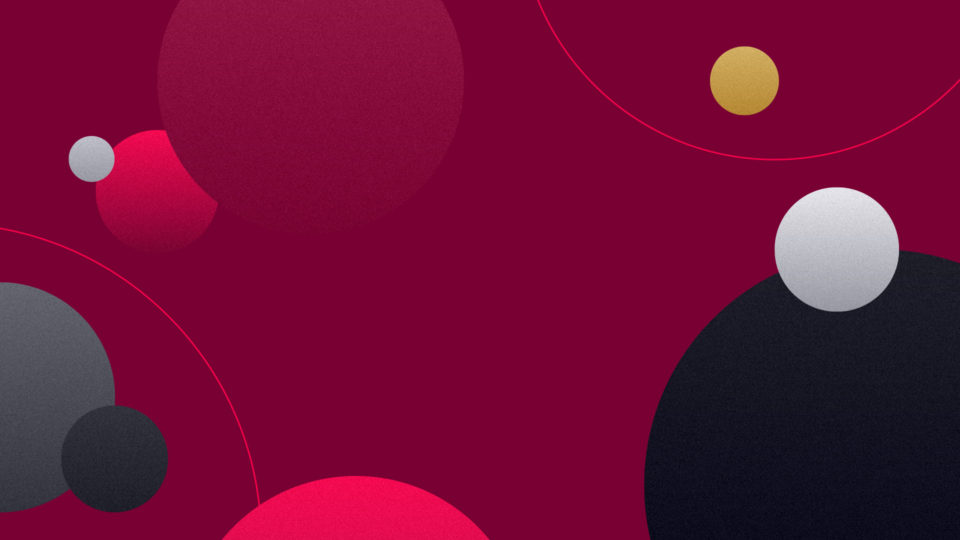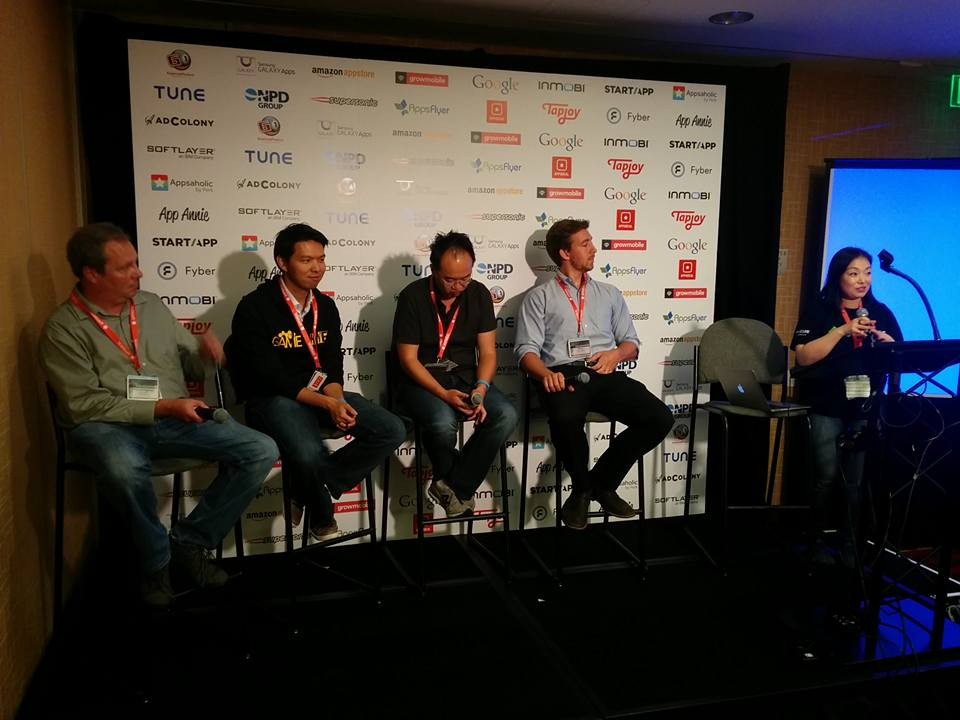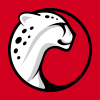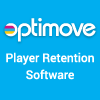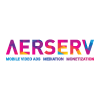The International Mobile Gaming Awards is the longest standing mobile games award program started in 2004 by Maarten Noyons. With its unique judging process, it has recognized some of the world’s most popular titles. Earlier this year, the IMGA celebrated its 12th edition in San Francisco.
main
BusinessContributionsIndustryOnlineResearchUncategorized
What Mobile Game Developers Need to Know About Protecting Their Apps
Faced with low production budgets and tight deadlines, many mobile game developers often devote their scarce cash resources on marketing/discovery — but little or nothing on protecting their app from malware, IP theft and other security threats. But ironically, marketing a game actually helps make it even more vulnerable to hacking, because if it grows in popularity, hackers are much more likely to identify the game as a good candidate for exploitation. This puts mobile game developers in a Catch-22 position: If their game doesn’t earn much money or downloads, it’s relatively safe from security breaches — but when it is successful, it becomes a target for malicious attacks which can undercut any revenue the game might have earned. DFC Intelligence founder and CEO David Cole explains more.
ContributionsDevelopmentGame DevelopmentOnlinePostmortemUncategorized
Wild Party Bingo: Using Pillars to Stabilize Game Development
Headquartered in Santa Cruz, CA with a satellite office in Vienna, Austria, Asylum Labs was created with the idea to work on what they call Social 2.0 games (games that feature high production values with an emphasis on key multi-player and social networking elements). Built in 2012, they have since created four games. Jason Kaehler, the CEO of Asylum Labs, looks over the development of their fourth game, Wild Party Bingo.
Who is Asylum Labs?
Back in 2012, four of us decided to start an indie studio. We had no money, but a ton of experience and passion. Together, we have 100 years’ game development experience, so we spent quite a bit of time considering the product direction and company focus. Between the four of us, we had worked on virtually every kind of game out there. We decided to go after “social casino” (defined as casino style games where you cannot win real money) for a number of reasons. However, our primary motivator was that we saw a category experiencing rapid growth, but had a lack of quality product. Even the high-quality games did not have much innovation. Yes, they are red waters, but we decided by staying off the beaten-path, we could win.
Design Pillars
When we decided on Wild Party Bingo, we had previously launched three games: Find the Words, Lucky Ace Slots, and Zombie Coinpusher. While they are all fun, these games are all single-player and not great examples of the social experience we believe is critical for success.
Besides being a massive market and having worldwide appeal, we chose Bingo because the core mechanic is relatively simple. We knew we were going to add a bunch of cool stuff, and we didn’t want to add complexity to something already complicated. We were also influenced by the fun-factor in the current market leaders in the Bingo game space (games like Bingo Bash and Bingo Blitz). Bingo is already known (in the real world) as the most ‘social’ of casino games, so we figured it would be a great vehicle to demonstrate our vision for the social casino category in general. Also, we knew we had three major goals with this game:
1) Improve Bingo Itself: In Wild Party Bingo, the classic game provides a solid foundation for all kinds of cool stuff. We added Powerups and Booster Parties (which are a kind of team powerup), Lottery bets, locations, achievements, etc. We may not have been the first to add Powerups to a bingo game, but we think ours are the most fun.
We also went through a lot of iteration and testing around the Powerups in particular. As many of you already know, tuning a multiplayer game is very different than tuning a single player experience. We had to be sure that none of the Powerups were overpowered, or that there are no exploits, etc. Having a game with 16 simultaneous users, all with unique actions, can mean unforeseen complications so that required tons of testing. The Powerups in particular had to be just right as we didn’t want to create endless variations (at least for launch).
2) Be Social: Everything we do is multiplayer. All our products feature rich, realtime, synchronous interactions between thousands of players. Most games in the ‘social casino’ category are not very social. These kinds of experiences are core to our philosophy of game design. Everything is just more fun with friends, right?
3) Have High Production Values: Chris Turner was previously an art director for AAA games, and he’s the force behind why our games look so great. As most of you know, doing awesome stuff on mobile hardware is quite a challenge. We ultimately chose Flash for our client tech, which had implications for the artists both positive and negative. On the positive side, Flash is an artist-friendly tool (mostly). It’s well-known and fairly mature and has lots of plugins etc. Animation system is built in and relatively easy to use, with good nesting and re-use of resources. Content-savy engineers can easily make tweaks to the art. On the downside, a lack of particle effects, some performance issues, and file resource contention were all things we struggled with.
Armed with these design ‘pillars’, we began to build prototypes and develop wireframes. We use Balsamiq for wireframing in the cloud, and it works great. Only after every screen and interaction was designed did we begin implementing anything beyond the core mechanic. I was surprised that the wireframe grew to about 80 screens; much more than I was originally expecting.
One thing we believe in strongly is rapid prototyping. During this phase, we would implement something ‘quick and ugly’ just to test it out. We were constantly trying things and rejecting them, searching for gems. In parallel, as product owner, I was helping to define the overall scope and feature-set. We wanted to step in the ring with the ‘big guys,’ so that meant lots of work just for feature parity. And then on TOP of that, we wanted to add a bunch of new stuff. Our studio is agile, so we met regularly to review the backlog and discuss prioritization and our MVP target.
Development of Wild Party Bingo
We never really had a hard transition from design to production, it was more like a slow transition as the product vision began to take shape. We are all fairly strict with ourselves about making dramatic changes late in the cycle, but that must always be balanced by the ability to remain flexible should opportunities arise to improve the product.
We are partially distributed, so the team utilized the usual tools email/skype/wiki etc. to maximize communications. We have a very ‘flat’ organization with everyone contributing 110 percent to the effort. Larry Holland, our CCO, is incredibly creative and really drove the design. As we approached Alpha, we did a quiet launch to friends and family on Facebook and used Survey Monkey to gather feedback. We had about 500 players and roughly 100 surveys. This experience was invaluable as we came to conclude we still had three big tasks left:
1) Not Enough Progression: We only had one level, and players would get bored pretty quick. We added 15 levels and a new ‘blackout’ mode (cover the entire card instead of just a row). This feature was substantial as it required art, design, and engineering efforts.
2) People Were Not ‘Finding’ the Powerups: They are one of our major features, and about 25 percent of the players didn’t even know they were there! It was very shocking to us, who took it for granted that people would click these big buttons, but that’s why you focus test. We addressed this in two ways; first to add Booster Party features, which is a powerup that just ‘happens’ when your team is doing well. This meant even if people didn’t use the old powerups, they would still get cool stuff and see animations/bling etc. We were also able to add new powerups and increase the inter-team and intra-team interactions. The second solution led to our third task of:
3) Creating a Tutorial: Lets face it, when you are doing something new, people need to have it explained. This is the dark side of ‘innovation’; the more radical your product, the more effort required to teach players what to do. For anyone that has created a tutorial, you know what a PITA those things are. We chose to design it as much like the actual game as possible, without a lot of ‘stop’ points (we ultimately did add two, at the most crucial moments).
These three features added about four months to our production cycle, pushing the whole thing to about 12 months. We recently launched on Android/Facebook and (at time of this writing) are in Apple submission.
Let’s Look at the Tech
At this point, it’s worth mentioning the tech. Unlike most mobile games, we are fully multiplayer (across device/platform also), so we had a ton of server-side work to do. Albert Mack, our CTO, is a client-server wizard. We wrote our own system (we call it ArcLight Universal Platform (AUP)) designed specifically for the distribution of mobile casino games. Albert had built similar systems in the past and after evaluating everything else, doing it ourselves just made the most sense.
The main reason we created our system was control. We wanted to be able to architect the platform specifically for the needs of cross-platform, ‘mobile first’ casino game distribution. Since the plan is to transition into real-money gaming, security is a critical component. Part of this means doing much more work server-side than you would normally do. For example, in WPB, every time you daub (mark a number), we run to the server to check if it was a correct daub or not. This extra work raises the technical difficulty level on the whole development effort, but provides additional security and flexibility.
Building out all the functionality for low latency, (Friends, Profiles, Gifts, Leaderboards, Matchmaking, Teams, Rooms etc.) took the majority of our engineering effort. Now that it’s built, we are excited to leverage it for future opportunities.
Understanding and Improving
For us, launching the product is just the beginning. Now the fun begins as we use our analytics platform Apmetrix to understand how the product is doing. We have spent (and continue to spend) substantial efforts on instrumentation to gain visibility into KPIs like acquisition, retention, and monetization. We ask questions like “What percent of our players make it past the first level?” or “How many of our players are still active after a week?” Once we have actionable intelligence, we then make changes to improve the overall performance of the product.
We also have some really exciting features on our roadmap. Soon, we will be implementing SessionM for real-world rewards. This is super exciting because you can win things like $100 iTunes or Amazon cards, just by playing our game. We have other exciting features planned like Clubs, Parties, Mentors, and Tournaments.
Wild Party Bingo is now available on Android and will be available on iOS soon. Find out more about the game on Asylum Labs’ Facebook and website.

